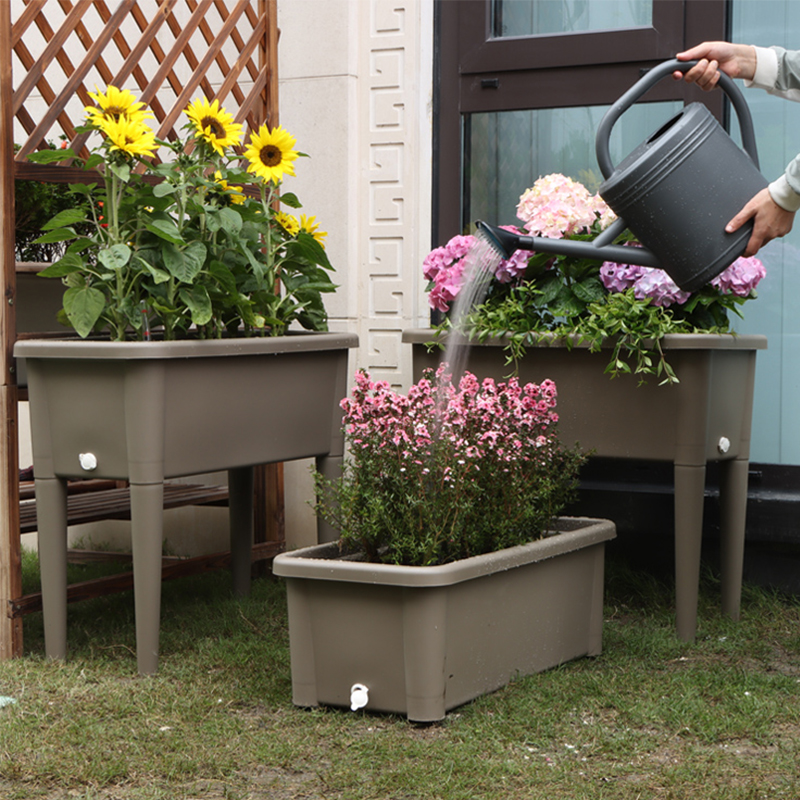For vegetables with shallow roots, such as lettuce or radishes, a smaller pot depth can work fine. In such cases, small colored flower pots can be a practical and attractive choice. These pots often come in various sizes and colors, allowing gardeners to organize their plants visually while providing adequate root space for shallow-rooted vegetables. Their compact size fits well on windowsills or small balconies where space is limited.

In contrast, vegetables like tomatoes, carrots, and peppers need deeper pots to accommodate their extensive root systems. A pot depth of at least 12 to 18 inches is often recommended for these crops. Containers that are too shallow can cause roots to become cramped and reduce the plant’s ability to absorb enough water, pilot to stress and diminished growth. In these situations, pairing the right depth with materials such as plastic bamboo fencing used as a windbreak or garden partition can create an inviting growing environment. This fencing provides support and protection without taking up much space, helping maintain a microclimate favorable for vegetable growth.
Another important consideration when selecting pots for vegetables is the environmental impact of the materials used. Recently, there has been a growing interest in biodegradable potting containers as an eco-friendly alternative to traditional plastic pots. These containers break down naturally in the soil, reducing waste and promoting sustainable gardening practices. When growing vegetables, using biodegradable pots can be especially beneficial because you can transplant seedlings directly into the garden without disturbing their roots, reducing transplant shock and encouraging healthier growth.
Returning to the subject of pot depth, it’s worth noting that the water retention properties of the container material can influence how deep the pot should be. For example, small colored flower pots made from ceramic may hold moisture longer than plastic pots, which can dry out more quickly. Therefore, when using plastic pots or biodegradable potting containers, gardeners may need to water more frequently, especially in shallower pots where soil volume is limited.
In addition to depth, pot width also matters, but depth often plays a more crucial role in root development for more vegetables. Deeper pots provide space not only for roots to grow downwards but also help maintain consistent moisture levels, which vegetables require to thrive. Shallow pots can advance to rapid drying and temperature fluctuations, causing stress to plants.
Container gardening with the right pot depth also allows for crop rotation and succession planting. For instance, after harvesting shallow-rooted crops from small colored flower pots, gardeners can reuse the same pots for seedlings started in biodegradable potting containers. This practice promotes efficient use of space and resources, making small-scale vegetable gardening more manageable.
In urban and confined spaces, combining container gardening with vertical elements such as trellises or fencing made from materials like plastic bamboo fencing can maximize productivity. These vertical supports help climbing vegetables like beans and cucumbers grow upwards, saving space on the ground and reducing competition for soil in pots.
Finally, the success of vegetable growth in containers also depends on the potting mix and drainage. Deep pots, whether traditional plastic, biodegradable, or decorative small colored flower pots, should have proper drainage holes to prevent waterlogging. Excess water can suffocate roots and encourage disease. Choosing the right depth combined with well-draining soil ensures vegetables have the ideal chance to flourish.
In summary, pot depth significantly impacts vegetable growth by affecting root space, moisture retention, and nutrient availability. Selecting pots with adequate depth tailored to the type of vegetable you plan to grow can advance to healthier plants and better yields. Using small colored flower pots offers a decorative and space-saving option for shallow-rooted crops, while biodegradable potting containers present an environmentally responsible choice for starting seedlings or growing smaller vegetables. Additionally, integrating plastic bamboo fencing into your garden setup can provide structural support and wind protection, enhancing the overall growing environment. Understanding these factors will help you make informed decisions for container vegetable gardening, whether you have a large garden or just a small balcony space.

 English
English 日本語
日本語 Español
Español Deutsch
Deutsch عربى
عربى

